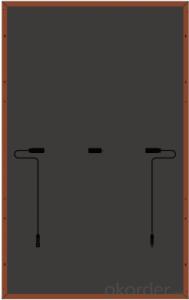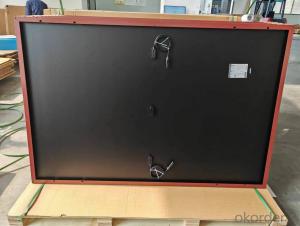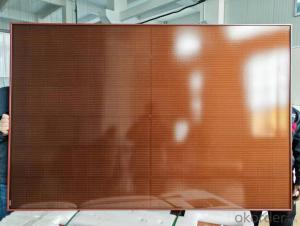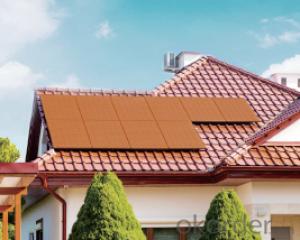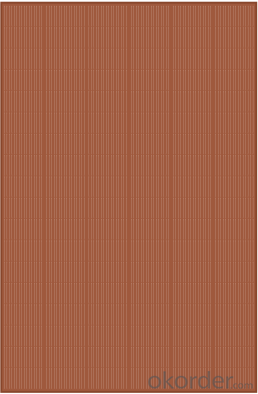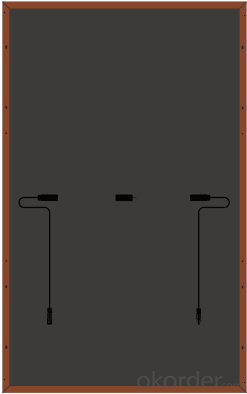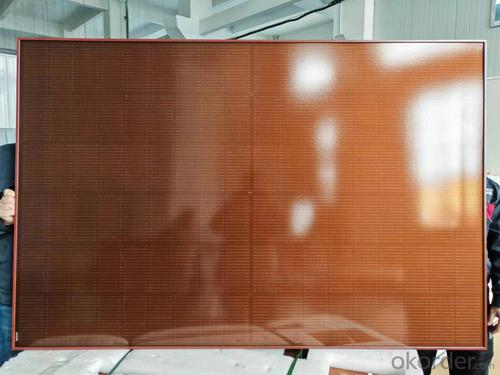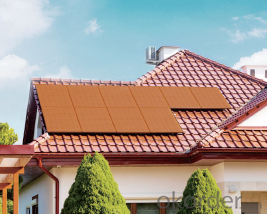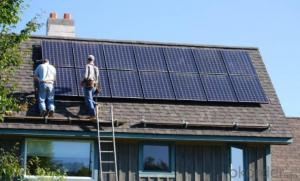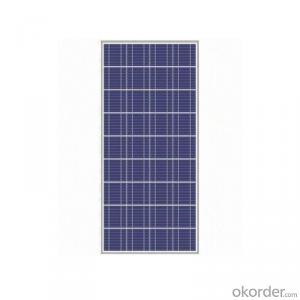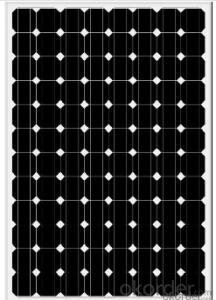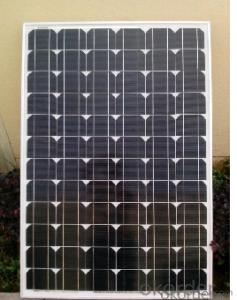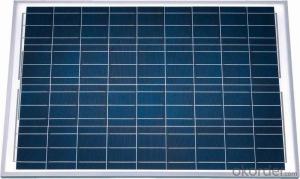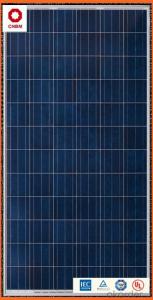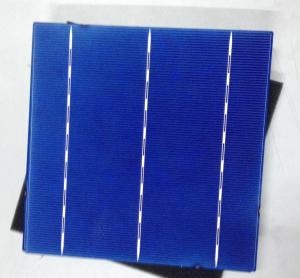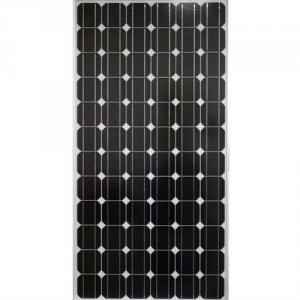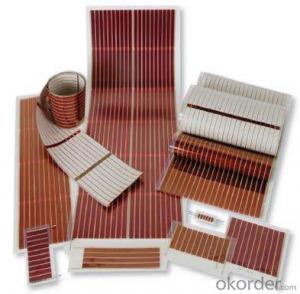Cecox 350W Orange-Colored Mono Solar Panels with High Voc Isc Solar Cells for Building Facade Integration
- Loading Port:
- Stock in Panama
- Payment Terms:
- TT or LC
- Min Order Qty:
- 36 pc
- Supply Capability:
- 100000 pc/month
OKorder Service Pledge
OKorder Financial Service
You Might Also Like
Specification
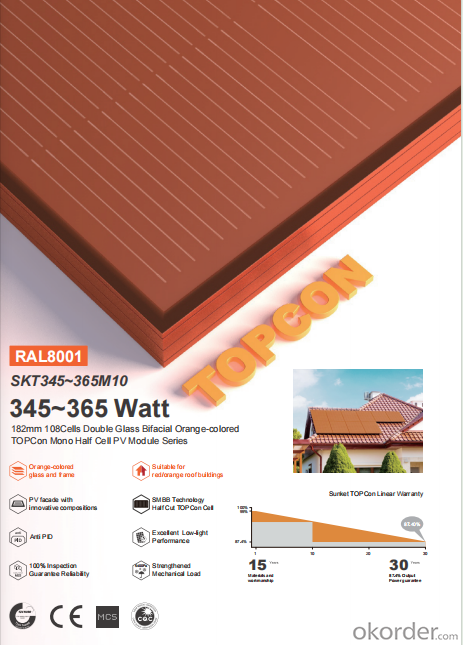
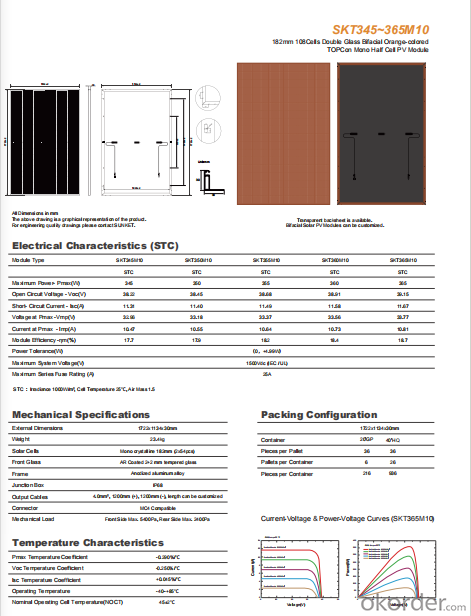
Company presentation
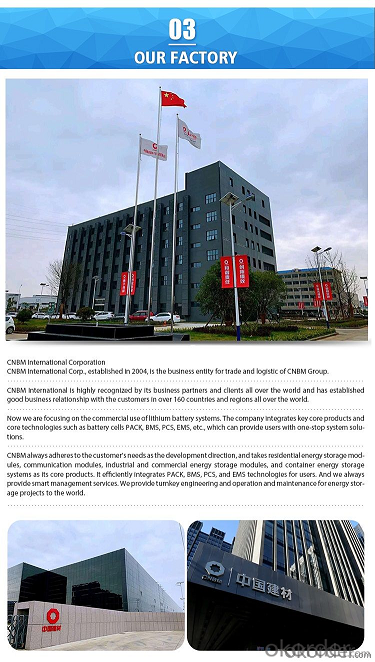
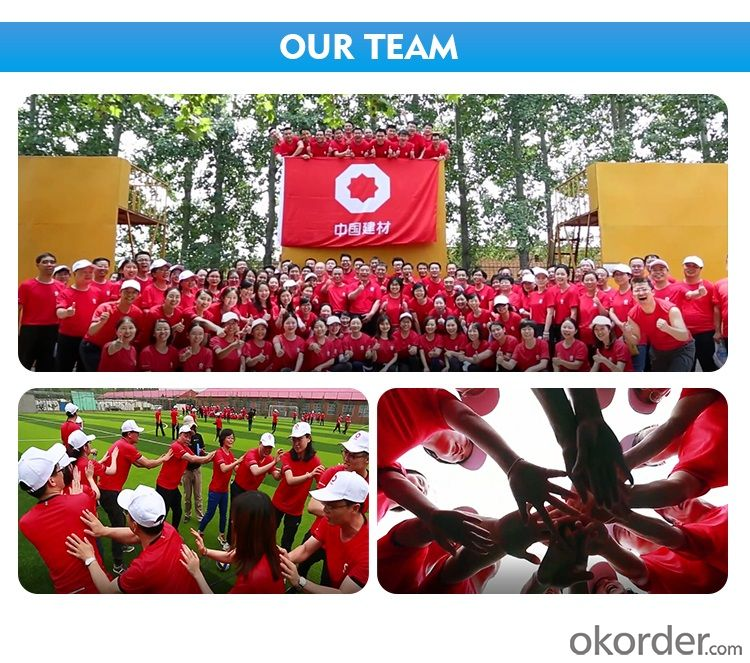
RFQ
Q: Do you have CE?
A: Yes, our products are approved by CE.
Q: Is OEM &ODM available in your factory ?
A: Yes, you just offer us necessary documents and then we will produce the products as your requirements.
Q: What is your Delivery time?
A: Usually, we make merchandise inventory. If we have the products in stock, the delivery time is 5-10 days after receiving the deposit; If we don’t have the products in stock, we will arrange the production right now.
The delivery time will be 10-30 days. It depends on the quantity of order.
Q:Why choose us?
A: 1. Ready To Ship 2. Sample Available 3. One-Stop Service 4. Online customization5. Many years' experiences of manufacturing and service available in 24hours
- Q: What is a High-efficiency electric solar cell panel?
- We should first check if the power output performance are stable, if not, no matter how high the power supply would be, it is not efficient but just unsafe.
- Q: What is the role of solar cells in powering streetlights?
- The role of solar cells in powering streetlights is to harness sunlight and convert it into electricity. This electricity is then stored in batteries, which are used to power the streetlights during nighttime or when there is not enough sunlight available. Solar cells enable streetlights to operate independently from the electrical grid, reducing energy costs and environmental impact.
- Q: Can solar cells be used in camping or outdoor recreational activities?
- Yes, solar cells can be used in camping or outdoor recreational activities. They are portable and can be used to power various devices such as smartphones, lights, and even small appliances. Solar panels can be easily set up in camping sites to harness energy from the sun and provide a sustainable and convenient power source in remote locations.
- Q: Can solar cells be used for powering remote sensors?
- Yes, solar cells can be used for powering remote sensors. Solar cells convert sunlight into electricity, making them a reliable and sustainable source of power for remote applications. They are commonly used to provide continuous power to sensors in remote locations, where access to the electrical grid may be limited or non-existent.
- Q: Can solar cells be used in transportation?
- Yes, solar cells can be used in transportation. Solar-powered vehicles and boats have been developed, and solar cells can be used to power various components in electric vehicles such as charging stations, auxiliary systems, and even directly powering the vehicle itself. However, the efficiency and cost of solar cells still pose challenges for widespread adoption in transportation.
- Q: Solar panel resistance is changed with what
- To be sure that this question is very professional. Secondly, I have to answer this question: the internal resistance of solar energy, mainly reflected in the power generation, the inhibition of current. In the time of power generation,
- Q: Can solar cells be used for powering remote weather stations?
- Yes, solar cells can be used for powering remote weather stations. Solar cells convert sunlight into electricity, providing a sustainable and reliable source of power for remote locations where access to the grid may be limited or non-existent. This makes solar cells an ideal solution for weather stations that require continuous power supply in remote areas.
- Q: How to get high voltage, high current output of solar cells
- Using 880 0.5 volt 5 amp output of the panel, 440 in series as the first group, and then get a second group, then the two groups in parallel, you can get 220 volts 10 amps output
- Q: What is the impact of solar cells on reducing energy inequality?
- Solar cells have a significant impact on reducing energy inequality by providing access to affordable and sustainable energy sources. By harnessing the power of the sun, solar cells can be deployed in remote and underserved areas, where traditional electricity grids are absent or unreliable. This empowers communities, particularly in developing regions, to generate their own clean energy, reducing dependence on fossil fuels and promoting energy self-sufficiency. Ultimately, solar cells contribute to bridging the energy gap and promoting a more equitable distribution of energy resources.
- Q: Can solar cells be used on wearable technology?
- Yes, solar cells can be used on wearable technology. They can be integrated into various devices such as smartwatches, fitness trackers, and even clothing to provide a sustainable source of power. This allows wearables to be charged using sunlight, reducing the dependency on traditional charging methods and increasing their mobility and convenience.
Send your message to us
Cecox 350W Orange-Colored Mono Solar Panels with High Voc Isc Solar Cells for Building Facade Integration
- Loading Port:
- Stock in Panama
- Payment Terms:
- TT or LC
- Min Order Qty:
- 36 pc
- Supply Capability:
- 100000 pc/month
OKorder Service Pledge
OKorder Financial Service
Similar products
Hot products
Hot Searches
Related keywords

